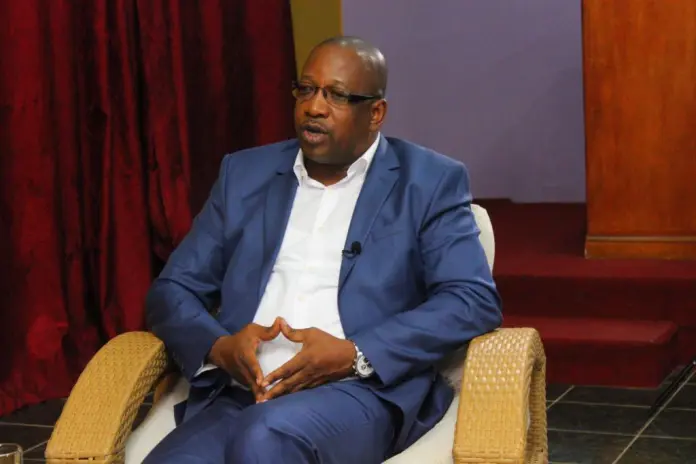
By Tabora Bojang
An independent assessment of Nawec’s water provision and distribution in urban and rural areas has found unacceptable deficiencies in the utility company’s operations.
The deficiencies include lack of a safety plan for water contamination, reliance on readings from faulty meters, the presence of iron contents in the water supply, and the provision of contaminated water with a high amount of nitrate above World Health Organisation guidelines.
The audit conducted by the National Audit Office (NAO) was contained in the National Assembly public enterprises committee report presented in the plenary Monday.
The audit revealed that from 2017 to 2021, Nawec did not have an approved strategic development that clearly outlined the water division’s strategic objectives and how they would meet the growing population demand.
The auditors stated that the company also failed to update the deficiencies in its water master plan since 2005 to reflect current events, and there were no mechanisms to increase water production for a growing Gambian population.
A whopping 77 percent of customers interviewed during the audit live without access to an uninterrupted water supply, with only 23 percent reporting having 24-hour access to water supply.
Unrealistic master plan
According to the auditors, Nawec’s current water master plan, made in 2005, which acts as a guide to financing agencies and other stakeholders concerning the staged implementation of the program components, was deemed unrealistic because it does not capture the realities on the ground. They observed that Nawec’s failure to update its master plan caused it to lose sight of its goal of providing adequate potable water to the population. As a result, the population faced severe water shortages.
Risks of water contamination
The auditors also noted that Nawec did not have a water safety plan for its water system that outlines all potential emergencies and the actions that must be taken if they occur.
“Underground water sources, such as Bakau, Bansang, and Gunjur, have significant quantities of nitrates and iron.” NAWEC has no mechanism in place to treat nitrates in water. Despite developing ways to remove or reduce the iron content of water to an acceptable level, these strategies have failed, since the water delivered to the residents of Gunjur and Bansang still contains significant levels of iron.
“Some wells are pumped directly into the water supply system because they assume the underground water in The Gambia is of good quality. Secondly, during site visits, the Auditors discovered that inappropriate chlorination methods were used in some Nawec facilities, such as the Brikama Kabafita standalone borehole, where they discovered that the facility does not conduct chlorination and instead relies on the chlorinated water supplied to the facility from the Brikama water treatment plant to ‘mix with the raw water’ and disinfect.”
Insufficient water production
The auditors further submitted that the water produced by NAWEC is insufficient for the urban area, let alone the peri-urban and provincial growth areas.
The daily water production of Nawec during the period under review was approximately 102,851,000 liters per day, which is only sufficient to provide approximately 69 liters per capita per day to the 2021 urban population of 1.48 million people.
“From 2017 to 2021, the projected urban population demanded was 252.67 million m3 of water, and NAWEC estimated water production at 187.71 million m3, therefore the demand and supply gap are 64.99 million m3.
Failures to test water distributed
The auditors revealed that Nawec has contravened the Pura regulations by failing to furnish the regulator with quarterly water quality reports.
Nawec instead relied on the water quality test that has been conducted by the Department of Water Resources on behalf of Pura for the past 10 years. During an inspection at Serekunda, Brikama, and Sukuta treatment plants, the auditors learned that offices were designed as laboratories, but these laboratories were no longer functional due to a lack of equipment and qualified staff to operate them. Nawec therefore did not monitor the quality of the water produced due to the absence of equipped laboratories. Additionally, the company did not outsource it to any other organisation that could do it on its behalf.
Difficulties in locating underground water leakages
The auditors noted with concern the absence of a Geographical Information System (GIS) to map out underground water pipes in the water system and help locate leakages, which resulted in long days, weeks, and months of underground water leakage that the company would be unable to easily locate. “The Trial GIS software was used by Nawec from 2009 to 2010 and was never purchased after its expiration date due to funding problems.
Inaccurate information about water production and usage of water meters
According to the Auditors, 18% of Nawec borehole meters have been faulty for more than five years.
The report noted that Nawec’s water division’s management claimed these meters were not replaced or repaired because they did not have the required budget to do so. It therefore uses the past readings as a reference to estimate the flow.
“During an inspection of the inlet and outlet bulk water meters at the water treatment plants, the audit team noted that 11 out of 18 meters were faulty. Due to the low accuracy of water flow meters, Nawec is not able to determine the volume of raw water sent to the treatment plant from its boreholes or the quantity distributed to customers.
No power, no water
According to the auditors, Nawec’s water production and treatment are powered by electricity solely generated by the company itself.
The audit findings revealed that there has been no functional standby generator since November 14, 2020, at the Brikama Water Treatment Plant, which is linked to 17 boreholes. At the Serekunda Treatment Plant, they found that 5 out of 11 boreholes were not linked to any standby generator. During the auditors’ inspections at the rural Nawec water production facilities, they confirmed that the generator at Basse Water Production Facilities, which is responsible for almost 7 villages, was not functional at the time of their visit on November 24, 2021.
Out-dated infrastructure
Analysis of a sample of 74 boreholes revealed that 37 (50%) of them outlived their useful lives, ranging from 29 (Sukuta) to 63 (Fajara) years old. The auditors discovered that aging infrastructure is a serious issue affecting the company during inspections of water plants and boreholes, with many of its infrastructures severely corroded.
High iron content in water
The lands in Bansang and Gunjur contain high levels of iron, resulting in iron levels in their water that exceed the WHO’s acceptable level. Nawec, on the other hand, has installed an iron filtration system in Bansang to address this issue. Additionally, in an attempt to reduce the high levels of iron in Gunjur’s water supply, Nawec decommissioned one of the boreholes with high iron content in Gunjur, but no iron filtration system was installed in Gunjur’s Water Treatment Plant.
The audit also noted that Nawec budgeted D6.3 million for iron removal treatment in Gunjur from 2017 to 2019, but there was no filtration system in Gunjur.



